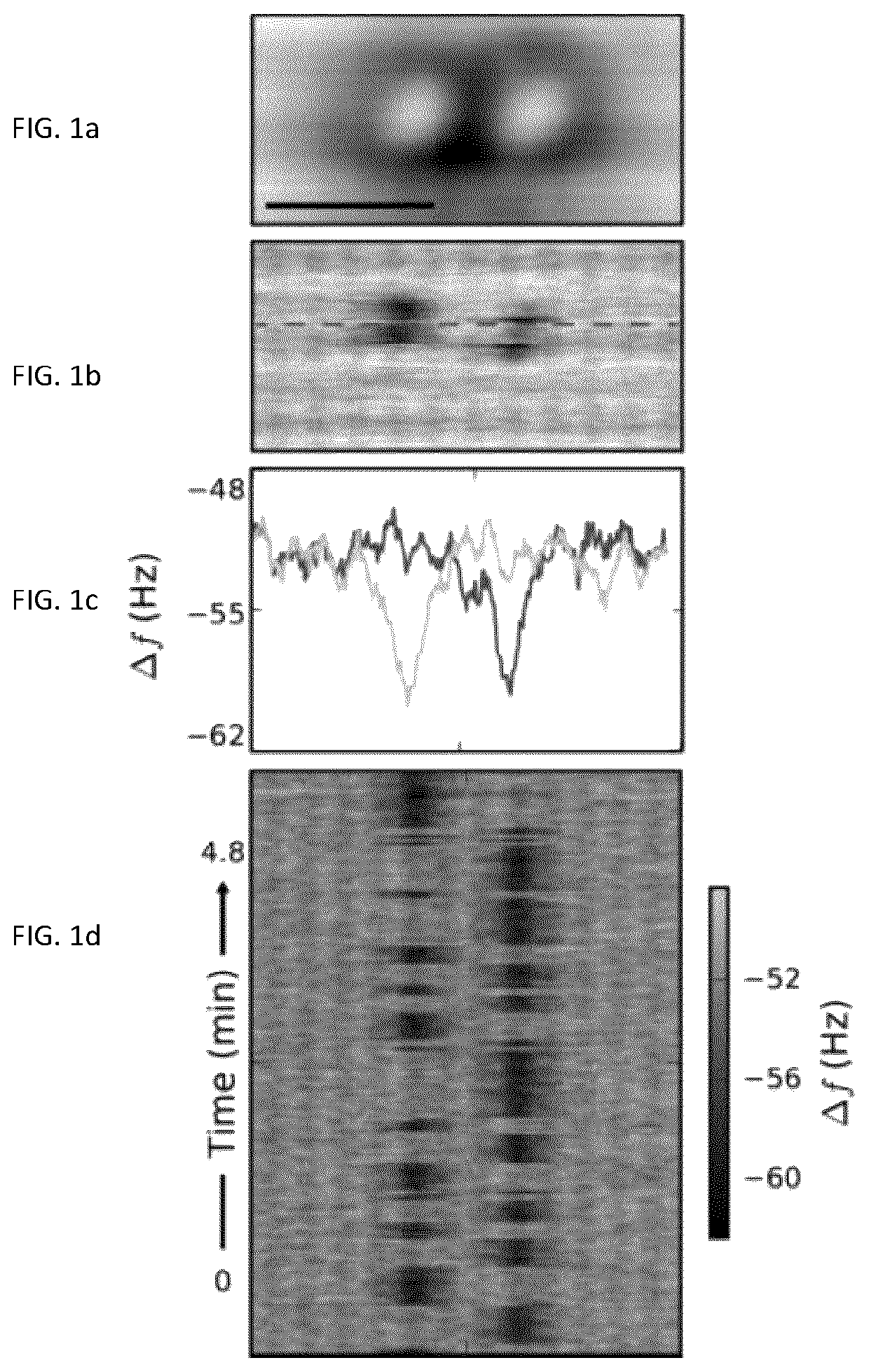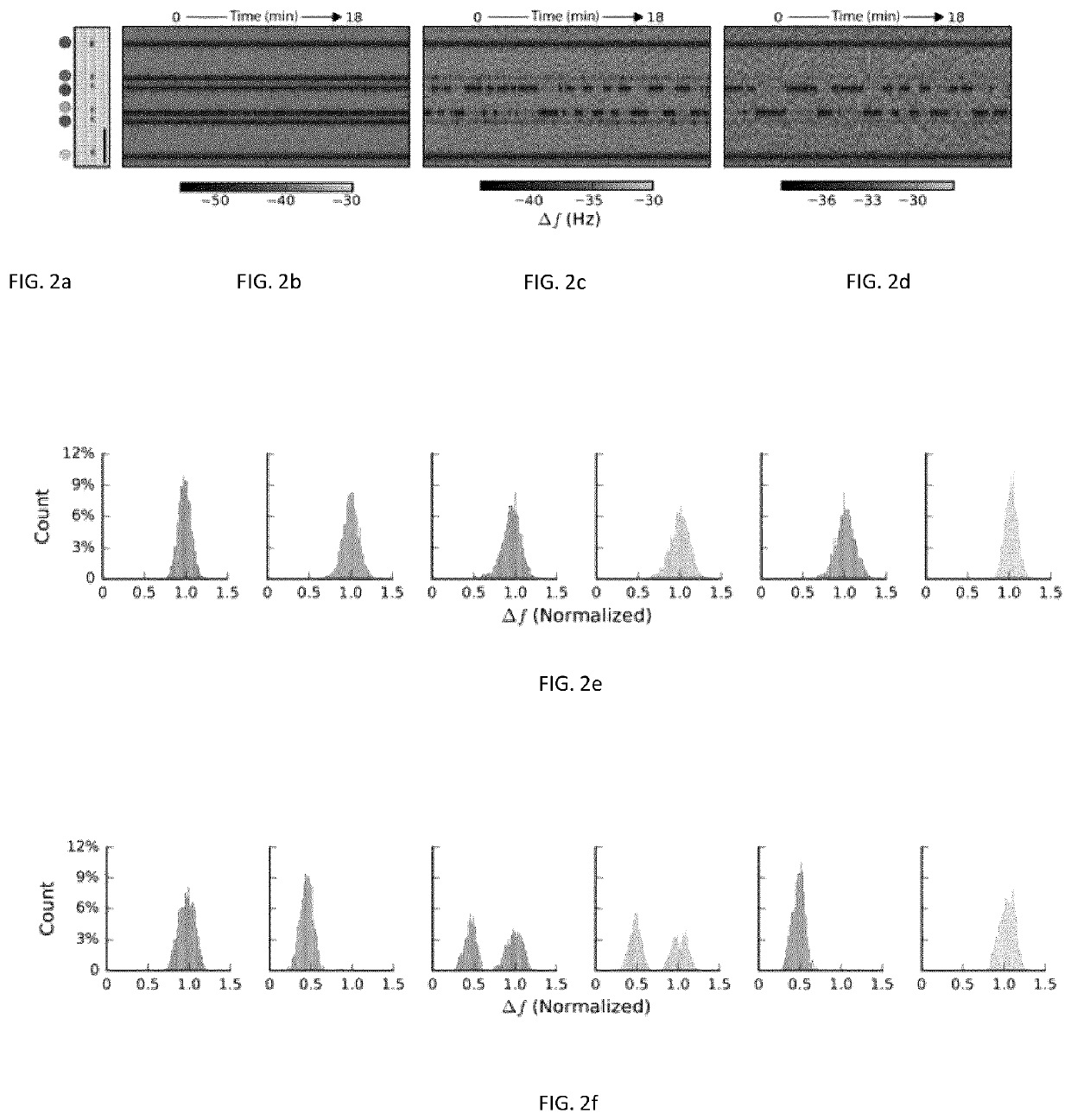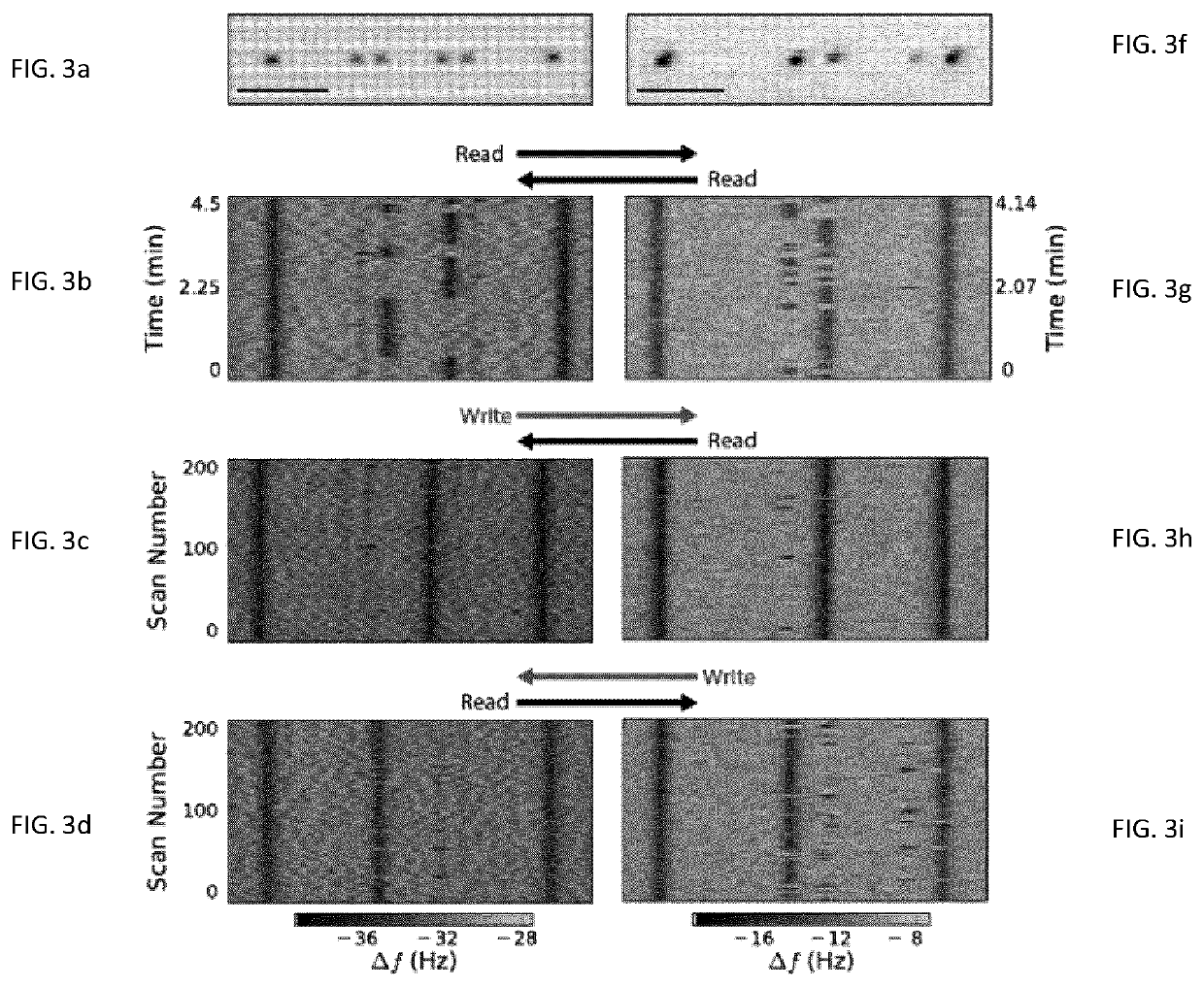Initiating and monitoring the evolution of single electrons within atom-defined structures
a single electron and atom technology, applied in the field ofatomic structures, can solve the problems of affecting the investigation of systems, slow and computationally expensive, and impede the use of samples generated,
- Summary
- Abstract
- Description
- Claims
- Application Information
AI Technical Summary
Benefits of technology
Problems solved by technology
Method used
Image
Examples
example 1
[0043]Experimental Setup—Experiments were performed using an Omicron LT STM / AFM head operating at 4.5 K and ultrahigh vacuum (−10 Torr). Tips were created from polycrystalline tungsten wire that was chemically etched, then sharpened, cut, and welded to a qPlus sensor using a focused ion beam. This fabrication technique reduces the sensors' mass loading to improve its quality factor. An additional electrode on the sensor was used to supply tunneling current. Tips were further processed with electron bombardment to remove the surface oxide, and sharpened by nitrogen etching while performing field ion microscopy. In-situ tip processing was performed by making controlled contacts with the tip to the sample surface, where previous reports have indicated likely results in a silicon apex. Samples were cleaved from (100)-oriented Si crystals that are highly As-doped (1.5×109 atom cm−3). After degassing at 600° C. for 12 hours, samples were flash annealed to temperatures as high as 1250° C. ...
PUM
 Login to View More
Login to View More Abstract
Description
Claims
Application Information
 Login to View More
Login to View More - R&D
- Intellectual Property
- Life Sciences
- Materials
- Tech Scout
- Unparalleled Data Quality
- Higher Quality Content
- 60% Fewer Hallucinations
Browse by: Latest US Patents, China's latest patents, Technical Efficacy Thesaurus, Application Domain, Technology Topic, Popular Technical Reports.
© 2025 PatSnap. All rights reserved.Legal|Privacy policy|Modern Slavery Act Transparency Statement|Sitemap|About US| Contact US: help@patsnap.com



